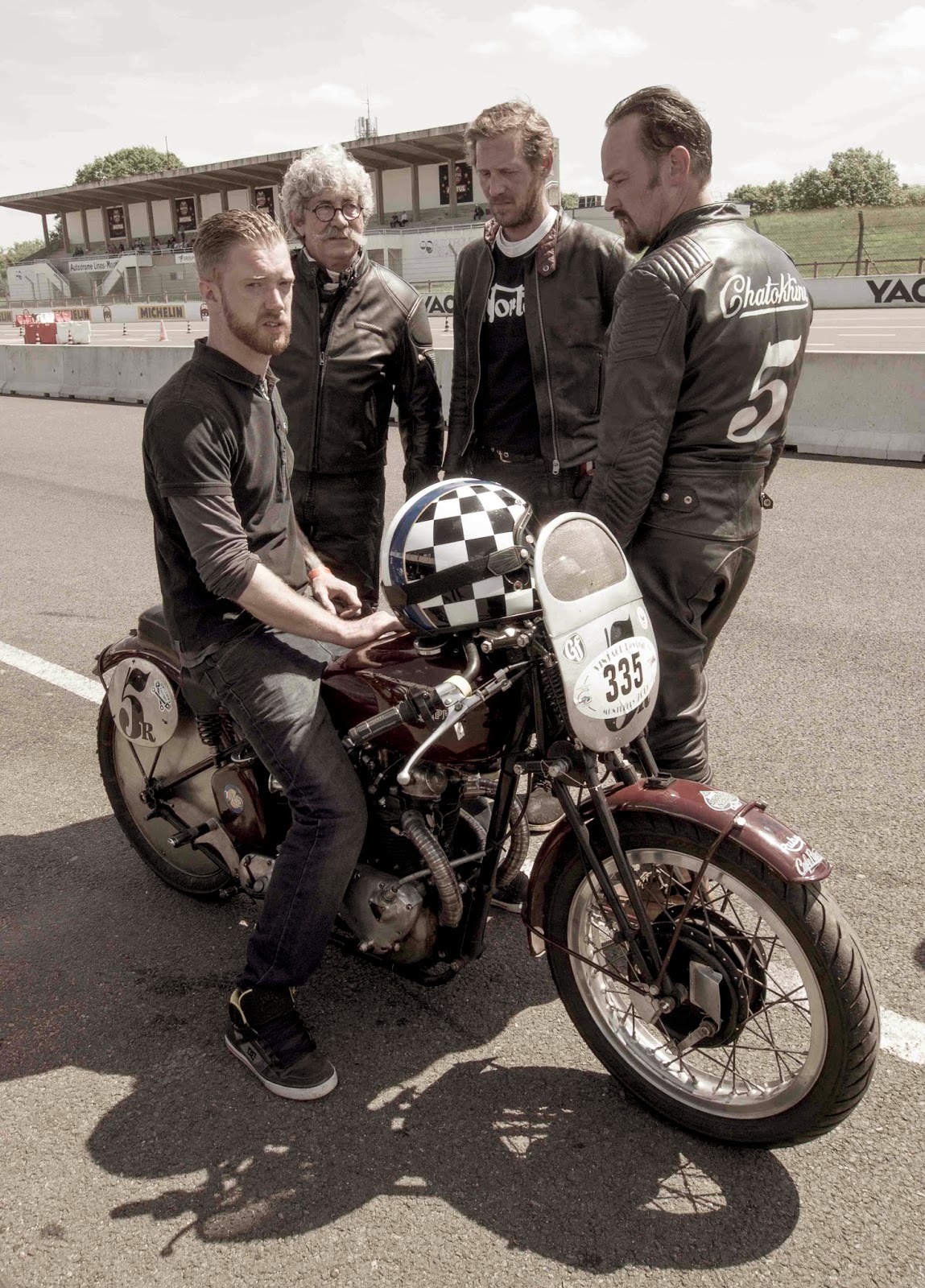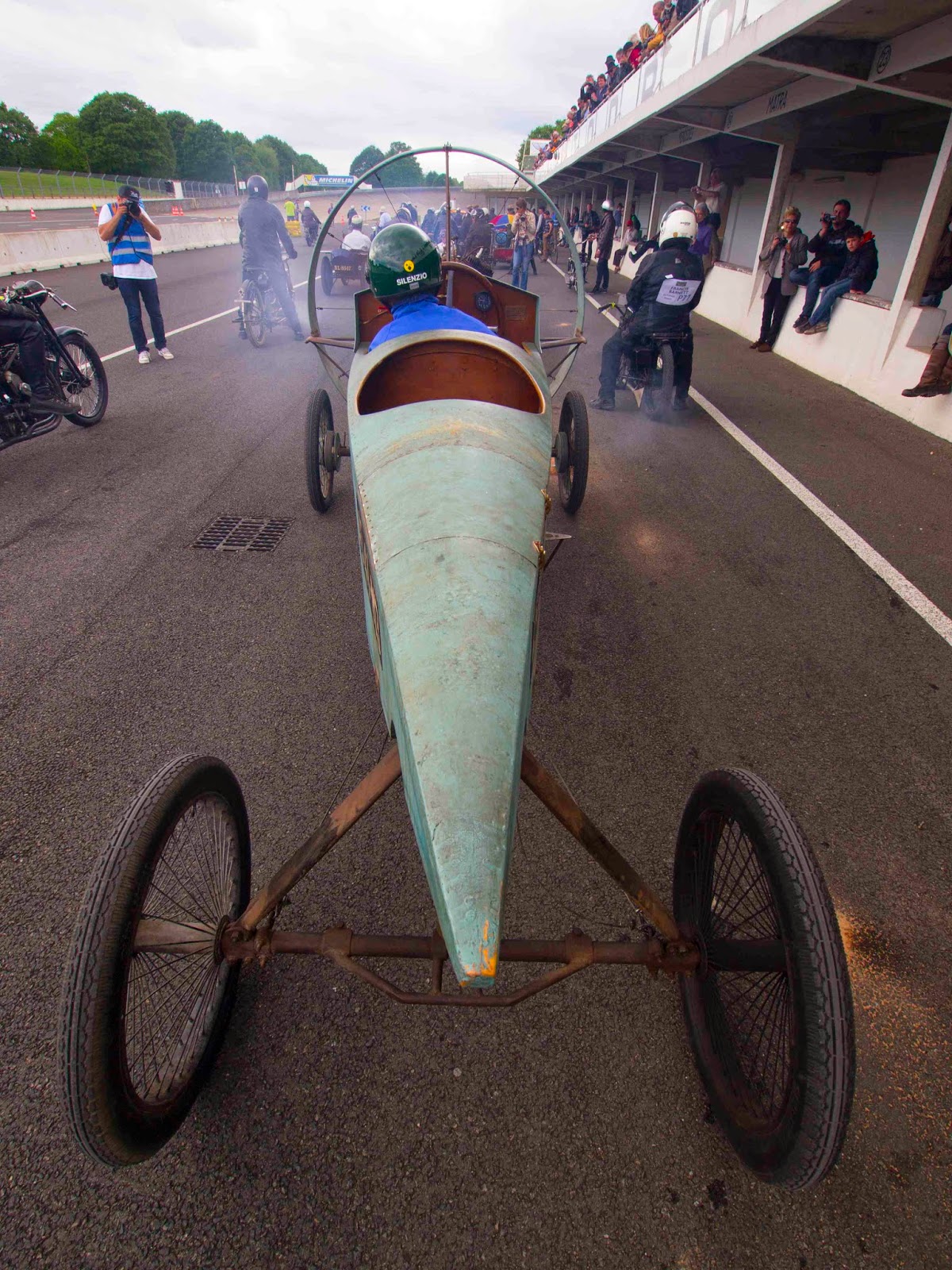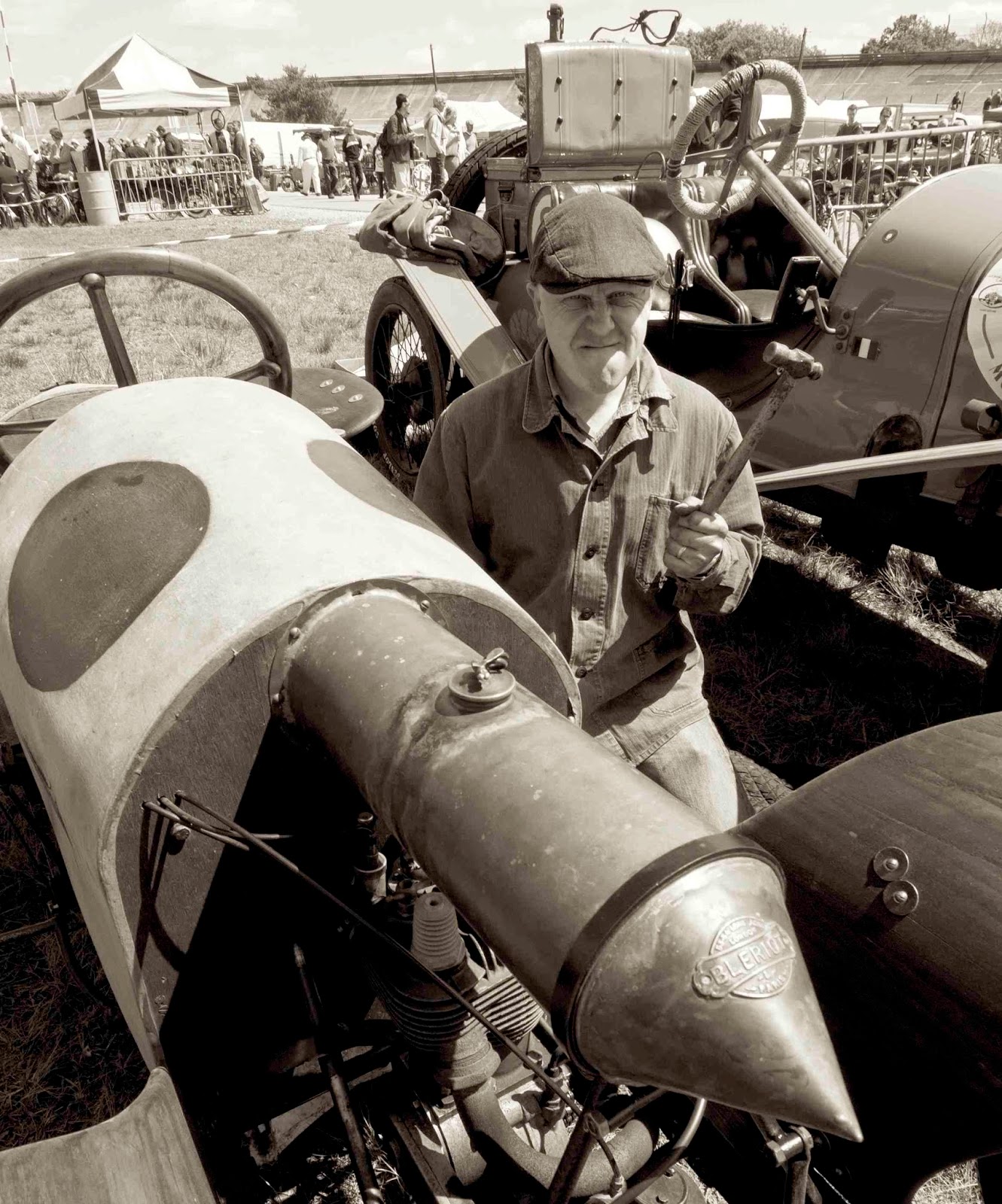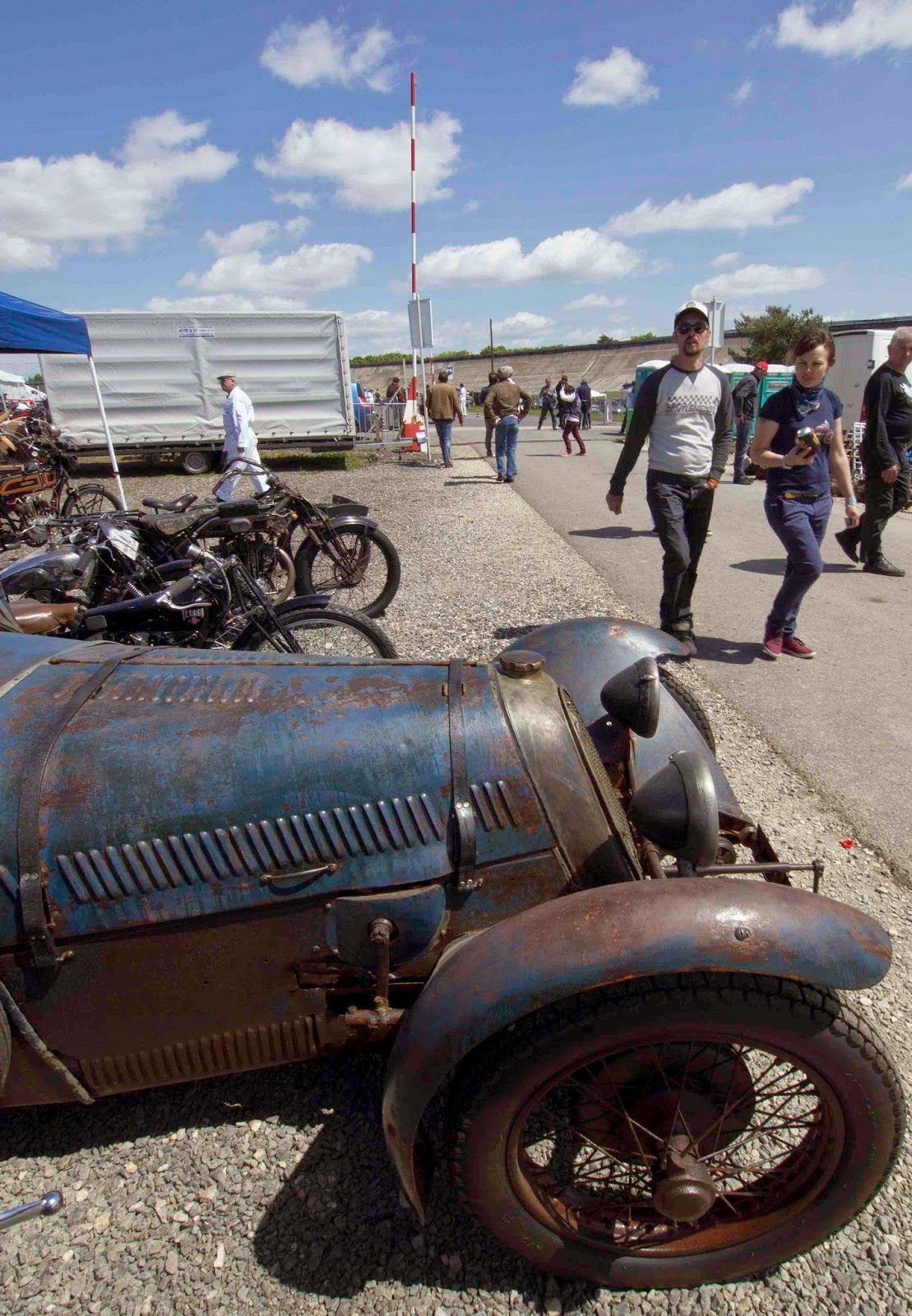Why on earth, my friends ask, would I travel 20 hours on a round-trip plane to Paris, and spend a couple of grand of my own money to attend a weekend event at a suburban Parisian racetrack in lousy condition, with shabby amenities, mediocre food, which is a pain to reach unless you have a car? The reason is simple; it’s worth it. If you’re a fan of pre-1940 racing cars and motorcycles, there really isn’t a comparable event, anywhere. Vintage RevivalMontlhéry has become to my eyes the most authentic vintage motorsports event in the world. Not as in ‘period correct’ as per the Goodwood Revival, that glorious costume party of 50,000 people, who are not allowed access to the truly interesting stuff, like the pits. It may be the right crowd, but it’s Disneyland crowded, and shares a bit too much of that park’s gloss for my taste. I prefer a little grit, because pre-war racing wasn’t a theme park, it was dangerous and poorly-paid stuff, and the participants did it for the love of the sport.

I suppose if that tens of thousands turned up at Montlhéry there would be tiered access as well, but as the crowd is still 4-figures small, with a very large playground, it feels very much in tune with the old Brooklands ad – the right crowd, and no crowding. VRM is the work of Vincent Chamon, who took on the mantle of the late lamented Jacques Potherat, the grandfather of vintage racing in France, who organized a ‘Vintage Montlhéry’ gathering for decades, before his untimely death 15 years ago. The track was without such a mixed-vehicle event for ten years, until Chamon decided to do something about it. This is the third of these bi-annual events, and it just seems to get better.

Unlike most motorsports events, the organization is almost invisible, with a very light touch. Gents and ladies in white boiler suits direct the action, and their attention is generally focused on getting vehicles onto the track in an orderly fashion. The glorious chaos of the scene, which actually has a fluid and orderly movement, includes a mix of pedestrians, bicyclists, children, and racing vehicles using the main throughfare/track access, which means there’s a constant mix of revving racers and ordinary folks milling along, with a kind of friendly acceptance of of each group’s needs. The frustration level looked very low, and I didn’t hear a voiced raised in anger amongst the scrum between pits and track, which considering the high temper of a rider or driver about to do hot laps, is really something.

Perhaps it’s because there’s nothing to win; the track time is a ‘parade’, which means a few take full advantage of the fantastically historic track’s banking and chicanes, while most are content with a fast but not furious pace. Some even potter, and know well enough to stay out of the way, clinging to the very bottom of the banking, while the really fast ones sail up the top line, which feels awfully near vertical when you’re on it. It’s an eerie sensation to gaze at the top of another rider’s helmet as you pass by/over and they’re perpendicular to you. But it is bumpy on the crumbly old concrete. Riding the track is truly living the history of the place, as an awful lot of world speed/distance records were set there from its inception in 1924 through the 1960s. Unlike Brooklands, competing interests (like tanks) never sullied the architectural concrete track banking, and we can still enjoy the magnificence of the place today. I found it especially poignant to be back at Montlhery after visiting Daytona for the first time last September, during the Cannonball, and being sorely disappointed at the lack of romance about the place. The center of the Montlhéry track is a forest, with big swaths of green grass, flowers, and shade if you need it. The grandstands will hold a thousand people at most, all else is trees and sky in the environs; it’s simply gorgeous. Visit the place before something stupid happens.

What appeared in 2015? Racers from collections all across Europe, from as far as the Czech Republic, with plenty from Germany, Holland, Italy, and England. To date, no motorcycles from US stables have appeared, a situation I’d love to rectify in 2017. There were American bikes certainly, Indian and Harley and Excelsior board trackers which seemed right at home on the banking – just about the only venue suitable for them actually. Mostly it’s what you would have seen on European Grand Prix circuits from the early 1900s through 1940, with plenty of ultra-rare machines you’ll see nowhere else, dragged from the depths of family collections far from the public (and the tax man’s) eye. The photographs here are a reasonable selection, but don’t encompass nearly everything – just the ones I managed in an attractive shot.

Here’s huge thanks to Vincent Chamon and his team for putting on an exceptional and beautifully run weekend event, and for arranging perfect weather too!



















































Related Posts
June 1, 2017
The Vintagent Selects: Vintage Steele, A Day In The Life
Vintage Steele is a small shop in…



